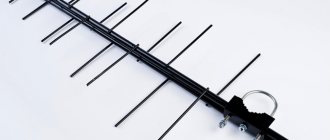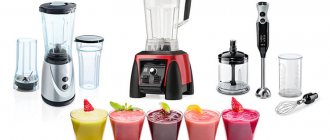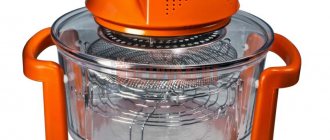What is the difference between a steam generator and a steam cleaner for the home?
The differences between a steam generator and a steam cleaner are not too great. But when purchasing, you need to clearly understand what the household appliance is for, and make a choice in accordance with this.
A steam generator is a device capable of producing dry steam at a temperature of 100-160 °C and supplying it under pressure through a special nozzle. Most often, this word refers to special irons, which consist of a working platform and a capacious boiler, connected to each other by a flexible hose. Steam generators have a narrow purpose - they are used mainly for disinfection and smoothing of regular and outerwear. You can use cleaning devices, but it is not very convenient. It is difficult to steam upholstered furniture and hard surfaces with an iron-shaped working attachment.
Some steam generator models require horizontal ironing, others are suitable for vertical steaming
Steam generators have several advantages. Such devices:
- flawlessly smoothes fabrics of any density from complex folds and creases;
- allow you to steam curtains and drapes without removing them from the curtain rod;
- remove stubborn odors and difficult stains on fabrics;
- disinfect clothes from pathogenic microorganisms.
The device differs from a conventional iron in that it provides a more powerful release of steam. In addition, the suspension is supplied almost dry through the working nozzle. The moisture content in it is usually at the level of 6%.
Attention! Sometimes steam generators and steam mops are also called steam generators, since the operating principle of all devices is the same.
A steam cleaner is a household appliance designed primarily for home cleaning. Like a steam generator, it works on the principle of water evaporation and delivers a hot slurry from a tank to a nozzle through a long flexible hose.
A distinctive feature of a steam cleaner is its versatility. It comes with a large variety of attachments. The set may include floor brushes and window rags, and narrow tips for hard-to-reach places. Using a steam cleaner, complex stains can be removed from almost any surface.
In everyday life the device is used:
- for disinfection and cleaning of the bathroom;
- to remove greasy marks and limescale from tiles;
- for high-quality cleaning of tile floors and laminate floors;
- for the care of upholstered furniture;
- to eliminate dust mites, bedbugs and other parasites.
Steam cleaners can be large, similar to a regular vacuum cleaner, or manual. Compact models hold little water and have low power, but they are cheap and do not require much storage space.
The steam cleaner can be used to treat glass, tiles, heat-resistant plastics and textiles
Operating principle and functional features of the steam cleaner
For complex cleaning using steam, a steam generator has been created - a special device for supplying heated water vapor. Manufacturers produce different models:
- Compact steam cleaners for a car or home are similar to an electric kettle with a long spout. Its container contains a heating element that heats the water, and a nozzle on the spout sprays and directs steam. The device is lightweight and easy to hold while cleaning.
- Multifunctional models are available for comprehensive cleaning of the house. They are more like a vacuum cleaner, where instead of a dust bag there is a container with water. Such devices can wash windows, clean carpets and upholstered furniture, steam clothes or do wet cleaning. Each operation has its own nozzle, included in the kit.
- Professional steam generators are designed specifically for cleaning companies. They are distinguished by their solid size, high power and variety of operations. Such devices are designed for cleaning large areas and are able to work on different surfaces.
IMPORTANT! Never point the nozzle at yourself or others, as this may result in serious burns.
Which is better - a steam cleaner or a steam generator?
After studying the difference between a steam cleaner and a steam generator, it becomes clear that the first device is more versatile in use. If you need equipment for comprehensive home cleaning, it is better to choose a unit with a large number of attachments. It will help clean floors, windows and kitchen surfaces, disinfect plumbing fixtures, and remove dirt from hard-to-reach corners and crevices.
If you are going to use the unit to process outerwear, bed linen, curtains and towels, you can opt for a steam generator with an ironing attachment. This device will significantly speed up the ironing process and make it easier and more enjoyable. But for home cleaning, the unit will be less convenient, since its nozzle is not intended for steaming hard surfaces and corners.
Steamer
Steamers are direct “relatives” of irons, since they are used exclusively for ironing, or more precisely, for steaming clothes and textiles. By the way, in some stores such devices are also called steam cleaners for clothes.
Outwardly, they resemble small electric kettles: water is also poured into the main container, and the steam generated by the heating element naturally comes out of the spout at the top. Various flat plastic attachments are usually attached to the spout, changing the shape of the steam output, or brush attachments for removing small contaminants.
The main feature of the steamer is a relatively weak steam flow, but this is enough to smooth clothes hung on hangers.
And the last point worthy of attention is the ease of ironing. Compared to an iron, a steamer allows you to better work out folds and hard-to-reach places, but it is not suitable for formal suits: you won’t be able to smooth out the creases on trousers or the collar on a shirt.
Features of steam generators
A steam generator, at its core, is a special, powerful iron with steam supply.
Keep in mind! Its operation uses the principle of steam boost, when a significant amount of hot steam is released over a certain period of time.
Its temperature can reach 150-160 degrees. With this effect, steam penetrates deeply into the fabric, which helps smooth even thick and rough materials.
Main goals
The design of the steam generator includes the following basic elements: a remote or built-in water tank (boiler) with a heating device, an iron, a steam hose for connecting the tank to the iron, and a set of special nozzles.
The device works as follows: water is heated directly in the tank until a sufficient amount of steam is formed.
Then, by pressing the start button, steam is supplied to the soleplate of the iron . Through holes in it, steam jets under pressure up to 6 bar are supplied to the product.
Note! As a result of the increased temperature, the steam is drier than in a steamer.
As a rule, a burst of steam for a few seconds is sufficient for effective smoothing.
Advantages of the device
Steam generators have the following advantages:
- fast smoothing due to high steam temperature;
- the ability to iron thick and dense fabrics using a boost of steam;
- possibility of ironing according to the principle of an iron with mechanical action or a steamer, i.e. without touching the fabric;
- steam supply in the steam boost mode or in a constant mode, which makes it possible to smooth out both complex and delicate materials ;
- increased volume of the water tank , which increases the duration of continuous operation;
- increased disinfection efficiency.
Know! It is also possible to turn off the steam supply. In this case, the device can work like a regular iron.
Disadvantages of the device
When operating steam generators, the following disadvantages are noted:
- inertia , because it takes time to heat up water in a sufficiently large tank (can reach 8-10 minutes);
- low efficiency when used in a vertical position;
- Difficulty in using when cleaning the room.
Most of the shortcomings of steam generators are eliminated by using special attachments instead of an iron.
In essence, in this case the combination of the two devices under consideration is ensured.
Types of steam generating devices
There are several main types of devices capable of generating steam. Despite the general similarity of the operating principle, each of these devices has its own operating features, purpose, as well as advantages and disadvantages.
Steam generator
The steam generator heats the water to evaporation temperatures, converting it into steam, which, in turn, is released with great force. In this case, the operation of the device implies minimal fluid consumption.
A steam generator can become a reliable assistant in various areas: it can easily cope with the disinfection of apartments and houses, is used for general cleaning, and is also used for ironing (it is especially convenient to steam large items, such as bed linen).
Expert opinion
Alena Tsarevskaya
Subpage for an expert
When choosing a steam generator, it is recommended to pay attention to its equipment - the more extensive it is, the more varied the device can be used.
pros
- the ability to quickly and efficiently iron - easily copes with overdried, heavily wrinkled items;
- disinfection - the use of high temperatures allows you to get rid of most known microbes;
- significant reduction in cleaning time;
- voluminous containers for liquid - involves long-term use of the device without interruption to refill water;
- no chemicals are needed for cleaning;
- Steam pressure allows you to reach the most difficult to reach places, increasing the level of cleaning quality.
Minuses
- high price;
- large dimensions of the device;
- frequent formation of limescale;
- the need for additional nozzles and brushes, without which dirt can be softened, but cannot be removed.
Steam cleaner
A steam cleaner is an innovative device that is used to remove almost all contaminants from various types of surfaces by exposure to hot steam. Thanks to a wide selection of models, a steam cleaner can have different sizes and characteristics - from a hand-held device, the dimensions of which allow you to take it with you on trips, to impressive stationary structures.
When choosing a steam cleaner, you should pay attention to the steam pressure indicator - the higher this value, the more efficient and better the operation of the device will be.
pros
- the ability to destroy bacteria - achieved by using high-temperature steam (above 130°C);
- no need to use chemicals as a cleaning agent;
- increased air humidity;
- versatility of design, allowing the steam cleaner to be used also as a steam generator and steamer;
- ease of use and care.
Minuses
- high cost of the device;
- the need for additional cleaning, since the steam cleaner only softens the dirt, which then needs to be removed independently;
- the need to use water with a soft structure - this will help avoid frequent scale formation inside the device;
- operation at elevated temperatures - steam during operation is heated to temperatures above 100°C, which requires careful handling.
Steam vacuum cleaner
Steam vacuum cleaners are a design that combines two possibilities: a steam generator (steam cleaning of various surfaces from dirt) and a vacuum cleaner (vacuum suction of softened dirt into a garbage container). Moreover, all functions are available for use both simultaneously with each other and separately.
When choosing a steam vacuum cleaner model, it is recommended to pay attention not only to the suction power, but also to the volume of the water container - the duration of cleaning without interruption for refilling will depend on this parameter.
pros
- the use of high temperatures allows you to quickly deal with any type of contamination;
- cleaning is suitable for delicate surfaces;
- the ability to avoid chemical cleaning products;
- steam at elevated temperatures can destroy allergens and germs.
Minuses
- the need for additional wiping with a dry cloth to dry the surface;
- high cost of the device;
- When removing rust or plaque, the use of cleaning agents may be required.
Comparison of devices
Important! If we analyze the above features of both devices, we can identify the following significant differences:
- The steamer supplies humidified steam under low pressure, and dry steam under high pressure is supplied to the base of the steam generator.
- The steam temperature in the steamer does not exceed 100 degrees , and the steam generator is capable of heating it to a temperature of 160 degrees.
- The readiness of the steamer for operation after switching on is calculated in seconds (no more than 1 minute). And the inertia of the steam generator is at least 2-3 minutes and can reach 9-10 minutes with a large tank volume.
- The steam supply intensity for the steamer is 25-60 ml/min, and for the steam generator it is in the range of 80-150 ml/min.
- The steamer smoothes in a non-contact way, and the steam generator uses the principle of an iron. In the first case there is no sole, but in the second it is important.
- The main direction of use of the steamer is vertical, and the steam generator is used horizontally , on an ironing board.
It is easy to distinguish the devices by their appearance.
The steamer resembles a vacuum cleaner, in which various attachments are attached to a rod, and the steam generator looks like a large iron with increased functionality.
Which device is better?
It is impossible to say which device is better, because... They are given different tasks.
Taking into account the features, it is possible to identify conditions under which it is more effective to use one of them.
The steamer has advantages in the following cases:
- ironing a large number of different clothes of a non-standard style with an abundance of different inserts;
- ironing delicate fabrics;
- vertical ironing and cleaning;
- cleaning a variety of soft and hard surfaces, curtains, furniture;
- washing windows and tiled surfaces;
- cleaning from dust.
Note! Steam generators should be preferred in the following circumstances:
- ironing large quantities of thick and rough fabrics;
- ironing multi-layer products;
- ironing with disinfection, especially in the presence of small children;
- need for quick ironing.
When choosing a device for your home, you need to consider all the pros and cons.











